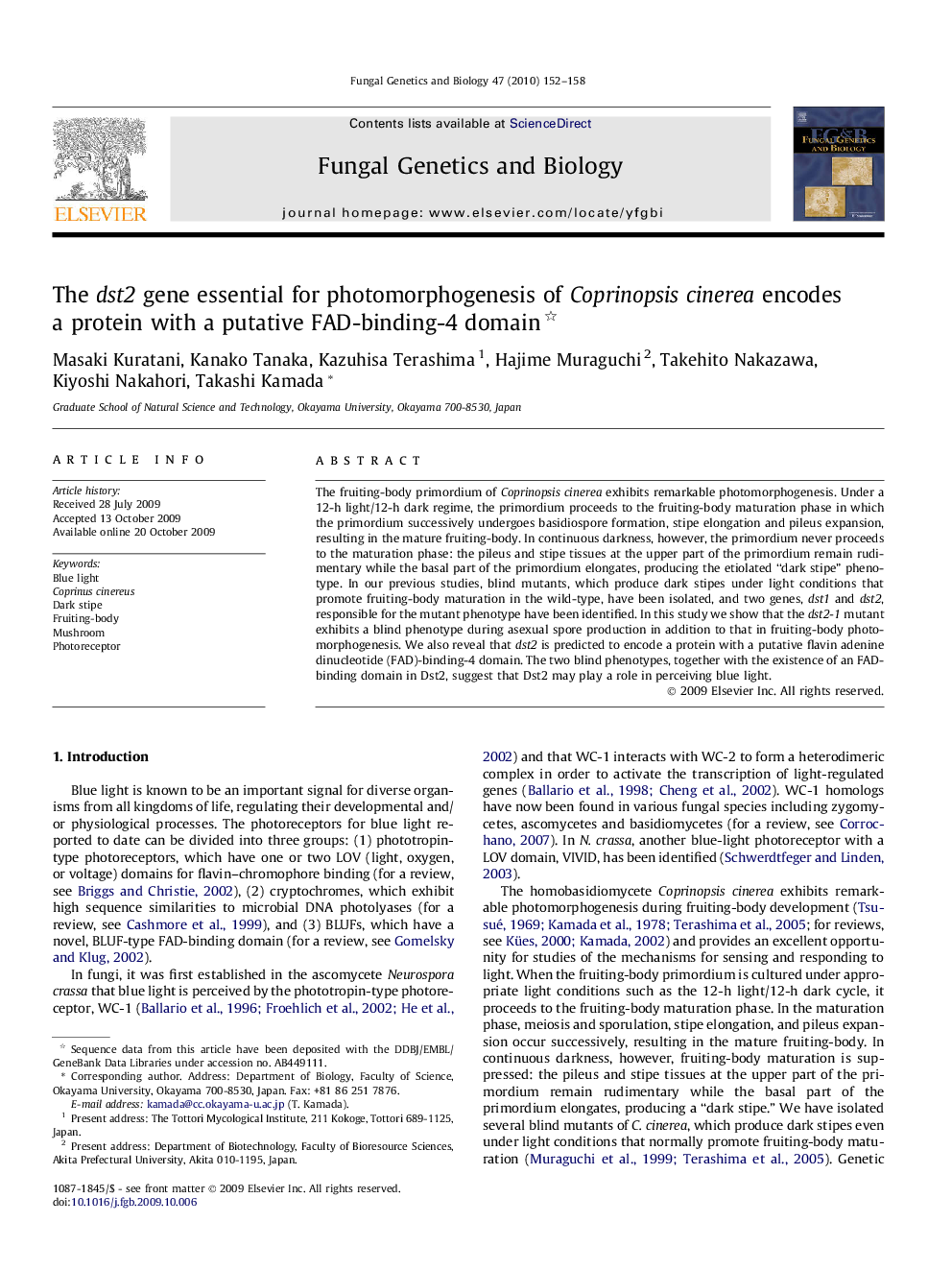| Article ID | Journal | Published Year | Pages | File Type |
|---|---|---|---|---|
| 10939605 | Fungal Genetics and Biology | 2010 | 7 Pages |
Abstract
The fruiting-body primordium of Coprinopsis cinerea exhibits remarkable photomorphogenesis. Under a 12-h light/12-h dark regime, the primordium proceeds to the fruiting-body maturation phase in which the primordium successively undergoes basidiospore formation, stipe elongation and pileus expansion, resulting in the mature fruiting-body. In continuous darkness, however, the primordium never proceeds to the maturation phase: the pileus and stipe tissues at the upper part of the primordium remain rudimentary while the basal part of the primordium elongates, producing the etiolated “dark stipe” phenotype. In our previous studies, blind mutants, which produce dark stipes under light conditions that promote fruiting-body maturation in the wild-type, have been isolated, and two genes, dst1 and dst2, responsible for the mutant phenotype have been identified. In this study we show that the dst2-1 mutant exhibits a blind phenotype during asexual spore production in addition to that in fruiting-body photomorphogenesis. We also reveal that dst2 is predicted to encode a protein with a putative flavin adenine dinucleotide (FAD)-binding-4 domain. The two blind phenotypes, together with the existence of an FAD-binding domain in Dst2, suggest that Dst2 may play a role in perceiving blue light.
Related Topics
Life Sciences
Biochemistry, Genetics and Molecular Biology
Cell Biology
Authors
Masaki Kuratani, Kanako Tanaka, Kazuhisa Terashima, Hajime Muraguchi, Takehito Nakazawa, Kiyoshi Nakahori, Takashi Kamada,
